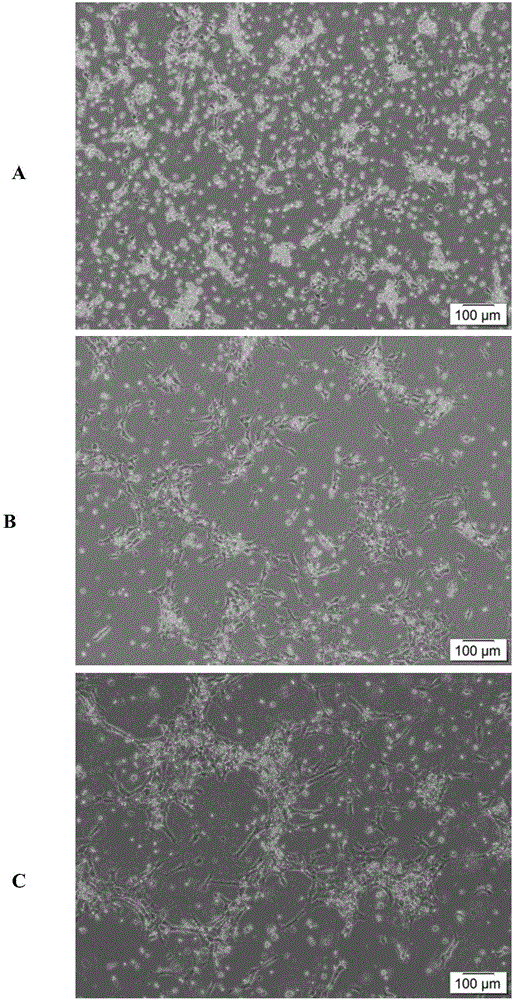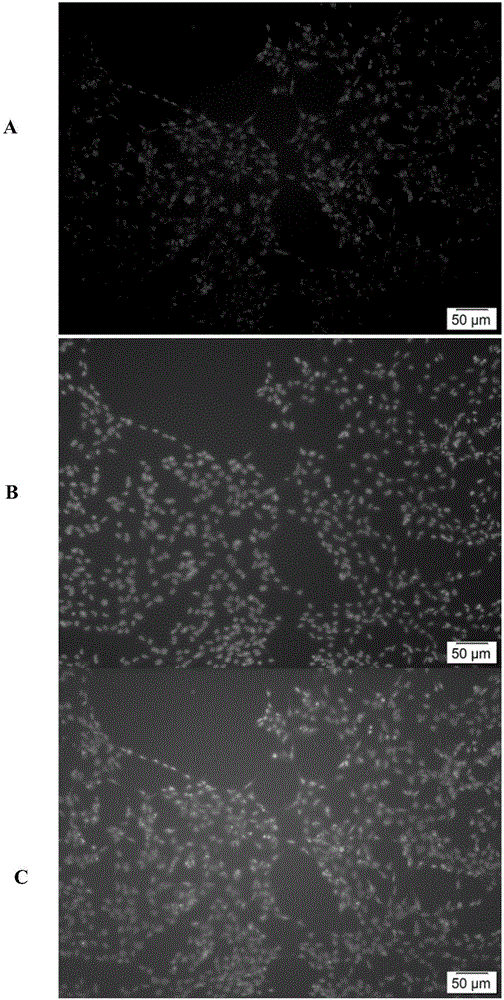Separation culture method of laying duck small yellow follicle granular cells
A technology for granulosa cells and small yellow follicles, which is applied in the field of separation and culture of granulosa cells of small yolk follicles of laying ducks, can solve the problem that the separation and culture method of primary granulosa cells of laying duck follicles has not yet been established, and achieves high purity, good vitality, and operation. simple effect
- Summary
- Abstract
- Description
- Claims
- Application Information
AI Technical Summary
Problems solved by technology
Method used
Image
Examples
Embodiment 1
[0044] (1) Select 172-day-old egg-laying ducks, use wool scissors to cut off the feathers and fluff of the abdomen, bleed the neck veins, wash the wounds with sterilized water, and wash the whole body with Promethazine diluent (1:49) After 2 minutes, dry the body with a sterilized dry cloth, send it to the cell culture room, spray the whole body with 75% (v / v) alcohol, and transfer it to the ultra-clean bench.
[0045] (2) Separate the outer skin and muscle layer in turn, peel off the membrane tissue around the ovary, separate and cut off the ovary with blunt tweezers, take out the entire ovarian tissue and follicles, and put them into a beaker filled with PBS.
[0046] (3) After measuring and grading the diameter of the follicles with a vernier caliper, the small yellow follicles with a diameter of 3-5 mm were separated with ophthalmic scissors and transferred to a 12 cm sterilized petri dish filled with PBS.
[0047] (4) After peeling off the connective and vascular tissue of ...
Embodiment 2
[0060] (1) Choose 185-day-old healthy laying ducks, kill them by bleeding from the jugular vein, wash the wound with sterilized distilled water, wash the whole body with bromogeramine diluent (1:49) for disinfection, dry it with a sterilized rag, put it in a tray, and transfer it to in the cell compartment.
[0061] (2) Spray the whole body of the duck with 75% (v / v) alcohol, and transfer it to the ultra-clean bench.
[0062] (3) Use surgical scissors to separate the skin layer, muscle layer and periovary membrane tissue, use forceps and surgical scissors to separate the complete ovary and follicles located on the left side of the duck body, and transfer them to a 50 mL sterilized beaker filled with PBS.
[0063] (4) Separate all the small yellow follicles with surgical scissors, measure the diameter of the follicles with a vernier caliper, and then grade them. Select the small yellow follicles with a diameter of 6-8 mm and transfer them to a 12 cm sterilized glass culture dis...
PUM
| Property | Measurement | Unit |
|---|---|---|
| diameter | aaaaa | aaaaa |
| diameter | aaaaa | aaaaa |
| diameter | aaaaa | aaaaa |
Abstract
Description
Claims
Application Information
 Login to View More
Login to View More - R&D
- Intellectual Property
- Life Sciences
- Materials
- Tech Scout
- Unparalleled Data Quality
- Higher Quality Content
- 60% Fewer Hallucinations
Browse by: Latest US Patents, China's latest patents, Technical Efficacy Thesaurus, Application Domain, Technology Topic, Popular Technical Reports.
© 2025 PatSnap. All rights reserved.Legal|Privacy policy|Modern Slavery Act Transparency Statement|Sitemap|About US| Contact US: help@patsnap.com



